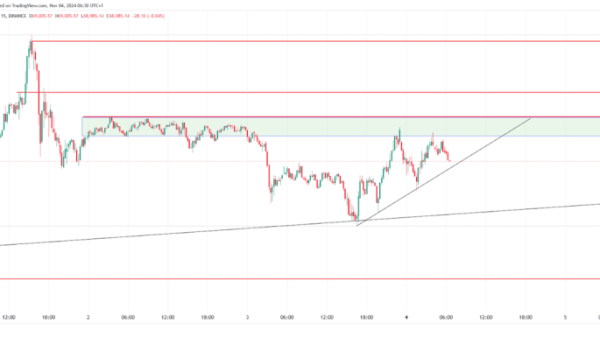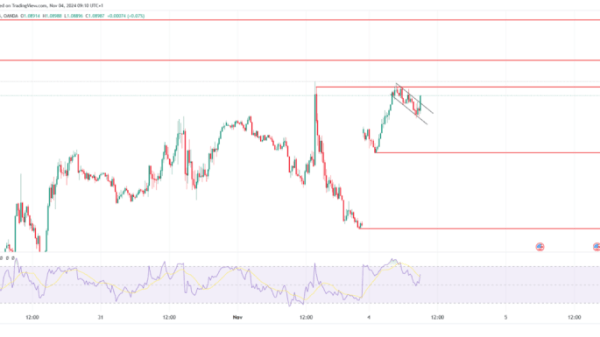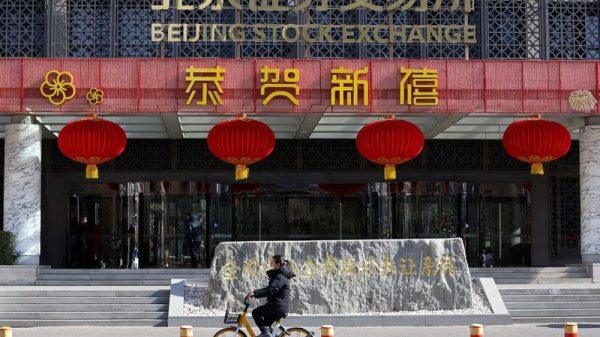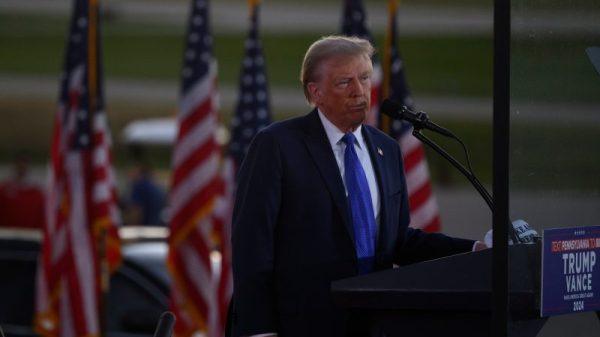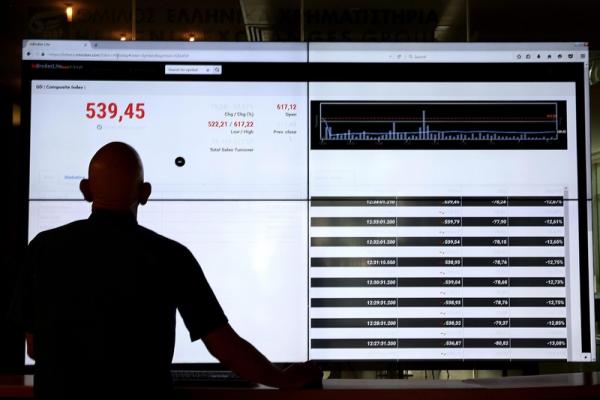International Flavors & Fragrances Inc. (IFF), a leading innovator in taste, scent, and nutrition, has reported a robust third-quarter performance for the year 2024, leading to an increase in its full-year guidance. In the earnings call held on [Date], CEO Erik Fyrwald and CFO Glenn Richter outlined the company’s financial achievements, including high-single-digit volume growth across all business units and a subsequent rise in adjusted operating EBITDA. IFF now expects net sales to reach between $11.3 billion and $11.4 billion, with adjusted operating EBITDA anticipated at the high end of the $2.1 billion to $2.17 billion range.
Key Takeaways
IFF reported high-single-digit volume growth across all business units in Q3 2024.
Full-year net sales guidance increased to between $11.3 billion and $11.4 billion.
Adjusted operating EBITDA forecasted at the high end of $2.1 billion to $2.17 billion.
Total (EPA:TTEF) revenue for Q3 surpassed $2.9 billion, a 9% increase on a comparable currency-neutral basis.
Cash flow from operations reached $702 million year-to-date.
IFF plans to complete the divestiture of its Pharma Solutions business in the first half of 2025.
Free cash flow guidance for the full year remains at approximately $600 million.
The company is cautious about Q4 performance due to potential customer inventory adjustments.
Company Outlook
IFF is optimistic about productivity improvements and long-term growth strategies.
The company is on track to complete the divestiture of its Pharma Solutions business by the first half of 2025.
Organizational changes have been implemented in preparation to separate the Flavors and Functional Ingredients segments in 2024.
The outlook for 2025 is optimistic, with a focus on innovation and productivity.
Bearish Highlights
Management remains cautious about the fourth-quarter performance, anticipating potential customer inventory adjustments.
The company notes a potential 3% adverse impact on sales growth due to foreign exchange rates.
Bullish Highlights
IFF has seen a 7% sales increase in Nourish, a 12% increase in Health & Biosciences, and an 8% rise in sales for Pharma Solutions.
Functional Ingredients is showing improvement, with mid-single-digit volume gains.
The company aims to increase EBITDA margins in the Functional Ingredients segment.
Misses
The order book for the upcoming contracting period is minimal, with zero orders projected for next year.
Q&A Highlights
Both multinational and regional/local customers are integral to IFF’s strategy, with investments in creative centers to improve service.
The company anticipates maintaining strong topline growth and reinvesting a percentage of sales into innovation, particularly in R&D and technical sales roles.
Regional growth varied, with India showing robust growth while China’s recovery remained inconsistent.
In summary, IFF’s third-quarter performance has set a positive tone for the company’s full-year expectations, with strategic investments and a focus on innovation driving growth. Despite some caution about the upcoming quarter, the company’s management remains confident in their strategies for customer engagement and long-term expansion. With a global presence serving over 4 billion people, IFF is poised to continue its growth trajectory into 2025 and beyond.
InvestingPro Insights
International Flavors & Fragrances Inc. (IFF) has demonstrated a strong financial performance in Q3 2024, aligning with several key metrics and insights from InvestingPro. The company’s robust revenue growth and increased full-year guidance are reflected in the InvestingPro data, which shows a quarterly revenue growth of 3.72% for Q3 2024. This growth is particularly impressive given the challenging economic environment and supports the company’s optimistic outlook for 2025.
InvestingPro Tips highlight that IFF “has raised its dividend for 21 consecutive years” and “has maintained dividend payments for 54 consecutive years.” These facts underscore the company’s commitment to shareholder returns, which is especially noteworthy given the recent financial performance and strategic changes. The current dividend yield stands at 1.61%, according to InvestingPro Data.
Despite the positive revenue trends, it’s important to note that IFF was “not profitable over the last twelve months,” as per InvestingPro Tips. This aligns with the reported P/E ratio of -9.61. However, the tip that “analysts predict the company will be profitable this year” suggests a potential turnaround, which could be linked to the productivity improvements and long-term growth strategies mentioned in the company outlook.
The market seems to be recognizing IFF’s potential, with the stock showing a strong 40.14% price total return over the past year. This performance may be attributed to the company’s strategic initiatives, including the planned divestiture of the Pharma Solutions business and organizational changes to separate Flavors and Functional Ingredients segments.
For investors seeking more comprehensive analysis, InvestingPro offers additional tips and insights that could provide a deeper understanding of IFF’s financial health and future prospects.
Full transcript – International Flavors & Fragrances Inc (IFF) Q3 2024:
Operator: At this time, I would like to welcome everyone to the IFF Third Quarter Earnings Conference Call. All participants will be in a listen-only mode until the formal question-and-answer portion of the call. [Operator Instructions] I would now like to introduce Michael DeVeau, Head of Investor Relations. You may begin.
Michael DeVeau: Thank you. Good morning, good afternoon, and good evening, everyone. Welcome to IFF’s third quarter 2024 conference call. Yesterday afternoon, we issued a press release announcing our financial results. A copy of the release can be found on our IR website at ir.iff.com. Please note that this call is being recorded live and will be available for replay. During the call, we will be making forward-looking statements about the Company’s performance and business outlook. These statements are based on how we see things today and contain elements of uncertainty. For additional information concerning the factors that can cause actual results to differ materially, please refer to our cautionary statement and risk factors contained in our 10-K and press release. Today’s presentation will include non-GAAP financial measures, which exclude those items that we believe affect comparability. A reconciliation of these non-GAAP financial measures to their respective GAAP measures is set forth in the press release. With me on the call today is our CEO, Erik Fyrwald; and our Executive Vice President, CFO and Business Transformation Officer, Glenn Richter. We will begin with prepared remarks and then take questions that you have at the end. With that, I would now like to turn the call over to Erik.
Erik Fyrwald: Well, thank you, Mike, and hello, everyone. I’m glad to be here with you all today to discuss our solid third quarter results. On today’s call, I’ll begin by providing an overview of our performance and the solid results across each of IFF’s businesses, which gives us confidence to increase our full-year 2024 guidance. I will also provide commentary on our efforts to continue to strengthen IFF for now and the future. I will then turn the call over to Glenn, who will provide a more detailed outlook at our third quarter financial results and discuss our outlook for the remainder of 2024, and we will then open up the call for questions. If you go to Slide 6, IFF delivered another quarter of solid results and significant bottom line improvement compared to a year ago. IFF achieved growth across all our business units with notable volume improvement across the entire portfolio. The combination of improved market conditions and our global team’s passion and drive to serve our customers and address evolving needs across end markets was a major contributor to our performance. The actions we have taken this year to strengthen our business and capital structure as well as our push to drive productivity in today’s dynamic marketplace are producing encouraging results. Importantly, we delivered high-single-digit volume growth with broad-based contributions across each of our businesses. Equally encouraging, comparable adjusted operating EBITDA grew by double-digits in the third quarter, primarily driven by volume performance and productivity gains. Considering our solid performance in the third quarter, specifically flowing through our over delivery in the quarter as well as our continued cautiously optimistic outlook for the fourth quarter, we are modifying our full-year 2024 financial guidance. We are making solid progress against our targets and are confident we will achieve net sales between $11.3 billion $11.4 billion which is almost $100 million higher than our previous guidance range. For EBITDA, we are tightening the range and are now targeting the high-end of our previously communicated range of $2.1 billion to $2.17 billion. Lastly, I am pleased to share that we remain on track to complete the previously announced divestiture of our Pharma Solutions business in the first half of 2025, marking another significant milestone in our portfolio optimization and deleveraging journey. Now moving to Slide 7. I want to highlight a few key achievements so far this year. While we continue to operate in a challenging end-market environment, our performance over the last nine months has bolstered our position as a preferred innovation partner and growth enabler for our customers. Over the last nine months, currency neutral sales grew 7%, primarily driven by double-digit growth in Scent and high-single-digit growth in Health & Biosciences. Comparable adjusted operating EBITDA has increased 19% year-to-date, fueled by our strong recovery in sales volume growth versus prior year lows and our productivity initiatives. Since announcing our new business-led operating model, operating philosophy and strategy refresh earlier this year, our focus on getting back to the basics is translating into stronger financial performance with greater end-to-end responsibility and accountability. With a reinvigorated mindset and a simplified structure, IFF is better positioned to navigate today’s complex and fast moving operating environment. Now these steps also include sharpening our focus on key end markets and increasing our investments in high growth areas for the benefit of our teams and our customers. In the third quarter, we also opened a creative center in Shanghai and have started to invest in additional creative centers in Mexico City and India. Together, these innovation hubs in important markets expand our global footprint and ensure we have the regional expertise required to serve customers on a more intimate level and address their unique needs. With our people at the heart of IFF’s revised strategy, I’m equally excited to announce that our employee engagement has improved significantly over the last 10 months. As I’ve said before, empowering and enabling our global team to do what they do best is essential to our shared success as a global organization. And earlier this month, much of our global team had the opportunity to come together and celebrate IFF’s 135 year legacy and 60th anniversary of being listed on the New York Stock Exchange, a true honor and reminder of the incredible legacy of this great Company. I have no doubt that, that legacy of IFF will continue for the next 135 years. But for now, I’ll pass it on to Glenn, for a closer look at our quarterly results. Glenn?
Glenn Richter: Thank you, Erik, and thank you all for joining us today. As Erik noted, IFF had another very solid quarter achieving revenue just north of $2.9 billion, an increase of 9% on a comparable currency neutral basis. We delivered broad-based growth across Nourish, Health & Biosciences, Scent and Pharma Solutions, with notable volume improvements across all four business units. Our ongoing productivity initiatives also contribute to a 16% increase in comparable adjusted operating EBITDA in the quarter. Building upon our margin strength from the prior two quarters, we also realized another successful quarter of margin expansion with our comparable adjusted operating EBITDA margin of 19.4%, improving by 180 basis points versus Q3 of 2023. Adjusted EPS excluding amortization was $1.04 in the quarter, increasing 17% versus the prior year period as strong profit performance and lower interest expense were mitigated by foreign exchange impacts in other expenses. Turning to Slide 9, our improved performance was broad-based this quarter. Nourish comparable currency neutral sales increased 7% and we delivered an adjusted operating EBITDA increase of 18%. This was led by Flavors’ third consecutive quarter of double-digit growth and modest sales improvement in Functional Ingredients. In Functional Ingredients, high-single-digit volume growth was mostly offset by our pricing actions, which were very consistent with our planned price investments this year. Overall, we are very pleased with our Functional Ingredients recovery plan that has delivered three consecutive quarters of volume growth with strong expansion in margins and EBITDA. Health & Bioscience achieved double-digit improvements in all of its businesses due to strong volume growth and productivity gains. H&B’s comparable currency neutral sales increased 12% and we delivered comparable adjusted operating EBITDA of $173 million a 15% increase from the year ago period. In Scent, double-digit increases in both consumer Fragrance & Fine Fragrance as well as high-single-digit growth in Fragrance Ingredients led to a strong quarter for both revenue and profit growth. Net sales in the quarter totaled $613 million up 10% on a comparable currency neutral basis and we delivered adjusted operating EBITDA of $127 million up 7% on a comparable basis. Lastly, Pharma Solutions returned to growth, delivering sales of $256 million, an 8% increase on a comparable currency neutral basis, while adjusted operating EBITDA surged over 32% to $62 million on a comparable basis. This notable performance was driven by strong double-digit growth in Industrial and mid-single digit growth in Core Pharma. Once again, margin expansion was primarily driven by volume and productivity gains. Turning to Slide 10, cash flow from operations totaled $702 million year-to-date, a $366 million increase from last quarter, while CapEx year-to-date totaled $303 million or roughly 3.5% of sales. Our free cash flow position totaled $399 million year-to-date, a sequential increase from $136 million last quarter. Year-to-date, we also distributed $411 million in dividends to our shareholders. Our cash and cash equivalents totaled $569 million at the end of the third quarter, including $2 million in assets held for sale. Additionally, gross debt for the quarter totaled approximately $9.1 billion with a net debt to credit adjusted EBITDA of 3.9 times, a decrease from 4.5 times at the end of 2023. Our trailing 12-month credit adjusted EBITDA totaled approximately $2.2 billion largely in-line with last quarter. As we look ahead to the fourth quarter and into the first half of ‘25, we remain committed to achieving our net debt to credit adjusted EBITDA target of below 3 times, following the completion of our Pharma Solutions divestiture. This sale, which again we expect to complete in the first half of ‘25, reflects our near-term focus on optimizing our portfolio and improving our leverage position to further strengthen our capital structure. On Slide 11, I’d like to turn to our consolidated outlook for the full-year ‘24. Given our improved financial and operational performance in the first three quarters of the year, tempered by some caution due to continued soft-end consumer demand, we are modifying our full-year ‘24 financial guidance. We now expect net sales to be in the range of $11.3 billion to $11.4 billion up from our previously communicated range of $11.1 billion to 11.3 billion. We also now believe that volumes will be in the range of 5% to 6% growth versus our previous expectation of 3% to 5% increase. Pricing is also now expected to be roughly flat for the full-year versus 1% growth previously as real pricing remains consistent with what we expected at the beginning of the year, but FX related pricing in emerging markets is expected to be slightly less than originally expected. Our outlook for the fourth quarter remains unchanged despite our performance in Q3, given macro trends as we closely monitor food, home and personal care end-markets, order phasing due to potential customers inventory adjustments at year-end and a slightly tougher year-over-year comparison. On the bottom line, we now expect to deliver full-year ‘24 adjusted operating EBITDA near the high-end of our previously communicated range of $2.1 billion to $2.17 billion. The high-end of this range includes the upside we delivered in the third quarter and assumes continued productivity improvements, a greater level of annual incentive compensation given the relative strength of our performance versus budget, and incremental reinvestments in the business with a focus on profitable long-term growth. Lastly, based on current market foreign exchange rates, we now expect that foreign exchange will have an approximately 3% full-year adverse impact to sales growth, assuming a EURO/U.S. dollar exchange rate of 1.12 at the time of our forecast was developed versus the previously expected range of 3% to 4%. I’ll now turn it back to Erik, for closing remarks.
Erik Fyrwald: Thank you, Glenn. I am tremendously proud of what our teams have accomplished both in the last quarter and through 2024 to advance our operating philosophy, our strategic direction and our execution capabilities. Together, we are building a stronger, more resilient IFF backed by a global team whose relentless dedication to innovation and winning in the marketplace continues to energize me quarter-after-quarter. Our solid performance this year is a direct reflection of the strength of our team and the shared buy-in for our strategic vision, and I am so grateful to work alongside such talented colleagues. While I’m energized by our recent performance, I am clear eyed and recognize that there is lots more work to be done. As Glenn mentioned, we remain committed to reinvesting in our businesses, particularly our highest return businesses over the long-term to ensure we are well-positioned to deliver sustainable, profitable growth to our shareholders. In the near-term, however, we remain laser focused on achieving our 2024 financial guidance and encouraging our global teams to unleash the full potential of IFF with our incredible customers. Thank you all for your ongoing support. I would like to now open the call for questions.
Operator: Thank you. We will now begin the question-and-answer session. [Operator Instructions] Thank you. The first question comes from the line of Josh Spector with UBS. Your line is now open.
Josh Spector: Hey, good morning, guys, and congrats on a solid quarter. I was wondering if you could walk sequentially to your 4Q guide versus 3Q. I guess when we look at it, it looks like a bit more than normal seasonality and even counting for conservatism, it seems a little bit lower than what we would have expected. So, what are the assumptions that you have behind that? And, is there anything you’re seeing now that maybe gives you some pause on some of the trends or any incremental data you could share there? Thanks.
Erik Fyrwald: Thanks for the question, Josh. Let me just say that the fourth quarter has started as we expected, which is very encouraging. But, the pattern we have seen in the last few quarters is a strong start and then a bit of deceleration through the quarter. And, we’ve got limited visibility to December at this point. So, we are cautious given the potential that customers could adjust inventory at the end of the year, which has happened in the last few years. But, let me just say that we want to make sure that we continue to deliver what we say we will deliver. But, the quarter started off as expected.
Operator: Thank you. The next question is from the line of Nicola Tang with BNP Paribas (OTC:BNPQY). Your line is now open.
Nicola Tang: Hi, everyone. Thanks for taking the question. I wanted to ask a bit about Nourish. Can you help us understand what drove the sequential decline in margins despite the strong topline performance? And again, can you provide a bit more color between Flavors & Functional Ingredients and how you’re thinking about the progression into Q4 as well? Thank you.
Glenn Richter: This is Glenn. Good afternoon, Nicola. I appreciate the question. Just as a reminder, typically, our high watermark for margin is Q2 for Nourish, a very positive mix as they go into the summer season here. What you see as it relates to the quarter-to-quarter progression between basically 2% and 3%, and then ultimately, from 3% to 4%, there’ll be a slight contraction in margin as well. As it relates to 2% to 3%, you have sort of mix more normalizes. And then secondarily, as we’ve mentioned that, we are increasing our investments in the business. So, those are beginning to basically show through relative to the margin as well. So as you look out into Q4, you should expect, because of the seasonality, i.e, lower volumes for Nourish in Q4, that we will have some degradation of 50 basis points to 90 basis points in terms of margin quarter-to-quarter.
Operator: Thank you. The next question is from the line of Ghansham Panjabi with Baird. Your line is now open.
Ghansham Panjabi: Thank you. Good morning, everybody. I know it’s still early, but could you give us a sense as to how you’re thinking about 2025 at this point as it relates to some of the high-level variances such as volumes, price, maybe compensation expense and also cost savings flow through?
Erik Fyrwald: Thanks Ghansham. First of all, it’s too early to give you any specifics. And as you know, we normally guide in February. And right now, we’re finalizing our budgeting process. But, I will make a couple of comments. First of all, as you’ll recall, we will have over $100 million in incentive comp reset in 2025, which is a positive for next year. And then, let me just add that we continue to work really hard on customer focus, on driving innovation and productivity to drive our performance. And, I got to say that, nine months in, I love how our teams are stepping up and driving performance, driving execution.
Operator: Thank you. The next question is from the line of John Roberts with Mizuho (NYSE:MFG). Your line is now open.
John Roberts: Thanks. First just to check on, are you on track for reporting Flavors separately from Functional Ingredients next year? And then, where was the incremental volume strength in the quarter or actually in the fourth quarter as well? I guess it’s the second half volume strength. And, do you think that was more driven by promotional activity by your customers and some easing in their pricing?
Glenn Richter: Yes, it’s a great question, John. So, relative to where we are with separation of Functional Ingredients and the Flavors business, we are on track to basically have that set up as two completely separate businesses. Actually, most of the organizational changes have been announced and implemented. We will start reporting it starting next year, which means in the first quarter. So, May of next year is when you’ll see the first cut between the businesses and we plan on providing some historical context as well.
Erik Fyrwald: And just to add to that, we have announced internally we didn’t see a need for a press release, but internally that we have named two Presidents, a President of what we’ll now call taste and a President of what we’ll call Food Ingredients.
Glenn Richter: Yes. And, then relative to the performance in the third quarter volumes, we actually pretty much, it was fairly broad-based, John, across all the businesses. Pharma was right on track, but the rest of the businesses generally sort of exceeded expectations. We had very strong Flavors, very strong Scent and certain businesses with H&B are very, very strong. We believe it is a combination, as you’re well aware, the end consumer, there’s very few signs that the consumer is getting any stronger in terms of what’s going on in terms of consumption. But, we do think that we’re picking up share and winning in the marketplace, and that’s a function of sort of the renewed focus on innovation, commercial excellence across the businesses, and the new operating model. As Erik had mentioned, the start as it relates to Q4, we’re just being a little more cautious because we had been surprised in December the last couple of years.
Operator: Thank you. The next question is from the line of Laurence Alexander with Jefferies. Your line is now open.
Dan Rizzo: Good morning, everyone. This is actually Dan Rizzo on for Laurence. Given the progress you’ve made this year, what do you think the right margin structure and ROIC is for your portfolio longer term once the farmer is gone?
Erik Fyrwald: The way I would answer that is we are focused on driving continuous improvement in both margins and ROIC, and we’re tracking them very closely by business now. And, the levers that we have driving customer focus, driving innovation and productivity are all helping us gain confidence that we’ll be able to continuously improve both. Also, I’d just add that we are prioritizing capital allocation to our higher margin and higher return businesses, Scent, Flavors, now we’re going to call it taste, and Health & Biosciences. And, we continue to have strong emphasis on driving Functional Ingredients turnaround, which we’re making good progress on. So, we are focused on these two metrics, and we’re doing the things to continuously improve over time.
Operator: Thank you. The next question is from the line of Patrick Cunningham with Citi. Your line is now open.
Patrick Cunningham: Hi, good morning. Is there any update to the adjusted free cash flow guidance for the year? I think last time you guided to $600 million. Should that trend higher now that we’re at the higher-end of the guide, or is it mostly offset by the working capital or other items?
Glenn Richter: Yes. So, two numbers I’ll give you, Patrick. Good morning. One is our reported free cash flow I’m sorry, our full-year free cash flow, we expect to be basically largely unchanged versus previous guide. You sort of already mentioned the reason why the earnings trajectory is higher, but we also are building more working capital, which is almost exclusively related to higher sales, so it’s sitting in receivables. So net-net, we’re sort of in a neutral position for the full-year, so no change in the forecast.
Operator: Thank you. The next question is from the line of Kristen Owen with Oppenheimer. Your line is now open.
Kristen Owen: Hi, good morning. Thank you for taking the question. Just wanted to double click on Functional Ingredients. Can you talk about what you’re seeing in terms of order activity coming into the contracting period? And, if you could provide an additional update on the Functional Ingredients’ turnaround? Thank you.
Glenn Richter: Sure. Yes, this is Glenn. Thanks, Kristen, for the question. The reality is we don’t typically have a long order book. And certainly, there’s very this is essentially zero into next year. The contracting period largely is around pricing with our relationships from the standpoint. It is going extremely well. We feel that this is a byproduct of the now two year work we’ve had in place to basically remediate the business. So, we are seeing very, very good progression in the business and expect it to continue into next year. And, there’s nothing in the annual negotiation process that suggests that we’re not in a very good place to sustain the momentum within the business. As a reminder, we have taken a tremendous amount of effort to fix our service issues starting two plus years ago. Our service levels are extremely high. Secondarily, we reinvested deflation and giving price back to basically be much, much more competitive in the marketplace. Third, we basically reenergized our sales pipeline, so work very closely with the front-lines and the innovation resources to identify how to win customers back and win new business. That has been working extremely well. And, those collective efforts have actually resulted us in having mid-single-digit volumes this year. We feel like we’ve gained back about half of the lost volume at this point. And, at the same time, we’ve been expanding margins very, both gross margin and ultimately EBITDA year-over-year growth very, very well. The last piece is we are in the beginning phases of a fundamental restructure of our global supply chain footprint. That means actually making sure that we have the assets in the best locations from a cost perspective and the best supply chain to support that. That will take several years, but we think that’s the final step as we’ve committed to in the past of moving this business back to the mid-teens range in terms of overall EBITDA margins CIRCA 12, 13 this year, but we should be able to get to 15 plus in the coming years. So, we feel very good. The team has done a phenomenal job, has been working non-stop to basically make this afternoon feel very good with the businesses.
Operator: Thank you. The next question is from the line of David Begleiter with Deutsche Bank (ETR:DBKGn). Your line is now open.
David Begleiter: Thank you. Good morning. Erik, nine months into your tenure, how would you characterize the progress you’ve made on the R&D organization and the innovation pipeline? And, what could that mean for new product sales in ‘25 and even ‘26? Thank you.
Erik Fyrwald: Thanks for the question, David. And, I feel very good about the progress we’re making. First of all, let me start by saying that each of our BUs have developed very strong strategies with very clear priorities. And, now with R&D embedded in the BUs, we can already feel both the power and the energy created by the focus and the better connection of our R&D efforts to customer needs. And I tell you, it energizes our R&D people and it makes the whole system work better. And, just one example, our Scent team now has a very clear plan and is already taking actions to strengthen our pipeline of naturals, synthetic chemistry and biotech molecules. So, it’s great to see that. What I would say on that, in terms of the impact is I think that the main impact of the new projects will be in 2026 and beyond. But, I can tell you that the energy is already helping now and will help in 2025 in terms of seeing those that pipeline strengthen and having discussions with customers and also our sales force energized by that, I think will benefit us is already benefiting us. And, I think we’ll have benefits in 2025. But, the specific project benefits will really come in ‘26 and beyond.
Operator: Thank you. The next question is from the line of Salvator Tiano with Bank of America. Your line is now open.
Salvator Tiano: Thank you very much. I just want to ask a little bit about the disconnect between the very strong organic growth you’re reporting and the more and the slower growing end-market. So, can you bridge a little bit the degree of outperformance that you have across the board versus slower consumer demand? And specifically on sand, it’s been on a roll for several quarters and that’s where I think your customers are also doing well in Fine Fragrance. But, how long can this extremely strong growth last?
Glenn Richter: Yes. Hey Sal, it’s a good question. One, just to remind obviously everybody is that there is a bounce back effect this year from the lag of destocking. So, there’s a mathematical sort of performance that the entire industry is seeing as we overlap last year. So, that’s obviously explained some of the incremental growth above what is happening at the consumer level. Fine Fragrance continues to be a unique case as everyone is well aware over the last several years. Since COVID, the category has exploded. We believe that that is a function of multiple things happening at consumer level, a plethora of new brands being launched, the impact of social media, ultimately the digital channel has become a very, very meaningful channel for the growth in the business as well. And, the use of Fine Fragrance has expanded beyond sort of a special occasion as a result of that. We like everybody in the industry, have seen that hitting the Fine Fragrance space. We believe that that will continue to some degree that there still are lots of new channels and new brand opportunities and certainly regional opportunities. I would also say that we believe because we do track how we’re doing in the market versus others as we are winning share. So, as Erik had mentioned, the investments we have been making relative to new geographies, adding perfumers, adding new creative centers, etcetera is the other way that basically we’re winning in the business and we’re very committed to continuing to do that, not only within the Scent business, but more broadly across the higher growth and higher margin businesses within IFF. So, appreciate the question.
Operator: Thank you. The next question is from the line of Kevin McCarthy with Vertical Research Partners. Your line is now open.
Kevin McCarthy: Yes, thank you and good morning. Can you discuss your expectations for price cost dynamics in the coming quarters? And related to that, would you touch on tariff scenarios? How do you think about potential for higher tariffs? Maybe you could talk about the experience in the past and how you’re planning to manage through various international trade scenarios moving forward?
Glenn Richter: Yes, good morning, Kevin. Generally, our price cost dynamic is flattish. We have seen throughout this year some continued deflation, not to the degree of last year, and our early outlook for next year is things are fairly stable. We believe there are certain parts of the basket that increases, but others some level of deflation. So generally, the price environment in our view is fairly static and the price cost dynamic is fairly static as a byproduct of that. Difficult to forecast at this point in time regarding tariffs. There is obviously some history here with the first Trump administration that was more focused as it relates to food and China as one country versus broad-based. So, it depends upon what if anything ultimately happens in the arena of tariffs. So, it is something that maybe yesterday people weren’t very focused on. But as of this morning, members of the team are very focused on. I would note that when there was basically escalation of tariffs in China, it’s probably intuitively good for our business relative our footprint, global footprint, our ability to react. As you’re well aware, there’s a more competitive environment within China. So, those tariffs could actually intuitively be advantageous to our overall business broadly. But obviously, stay tuned. And, as we think about kind of next year and provide guidance in February, there’ll probably be more to speak about at that point.
Operator: Thank you. The next question is from the line of Mike Sison with Wells Fargo (NYSE:WFC). Your line is now open.
Mike Sison: Hey guys, nice quarter and outlook. Just on the fourth quarter, if you’re at the high-end of your outlook range, it does imply that EBITDA will be down year-over-year despite positive growth. Just want a little bit of color on that and is that more conservatism? And then, quick follow-up, when you think about ‘25, a lot of companies thus far in chemical end have noted the first half not likely better than the second half. Could you sort of talk about what you’re seeing from customers? And, do you think they’re feeling better about next year, about the same, any sort of green shoots of improvement there? And, just kind of wanted to leave it at that. Thanks.
Glenn Richter: Yes. So, hey, good morning, Mike. I’ll take the first part, which is the year-over-year. We were 4.60 on a reported basis last year. As a reminder, we have FX and then portfolio changes from last year as well that actually turns that into around a 4.40 like-for-like. And, as you pointed out, our guide currently we get is around 4.40 for this year as well. It’s very simple, honestly. It has all to do with our incentive compensation. As you know, last year on the full-year, we were below 100%. As we’ve mentioned, we are materially above 100% in excess of an incremental $100 million of variable comp. That is a nearly $40 million year-over-year impact in the quarter alone. So, that sort of normalized impact is a huge impact. The rest of the equation is basically productivity is offsetting basically some modest level of inflation in investment. But, it’s really that incentive comp growth year-over-year that’s the biggest piece.
Erik Fyrwald: And then, Mike, to the second part of your question, we’re not really seeing strong green shoot comments yet from our customer base for 2025. But, the good news is that we’re taking aggressive actions to strengthen our position by getting back to basics, as we said before, heavy customer focus, heavy focus on innovation. And by the way, as customers see slowing end-markets, what they want to do is have more innovation so that they can drive growth relative to the market. And, that’s when they come to us and that’s a good thing. And, I’ll just also say we’re doing lots of customer business, lots of focus on customers and co-creation with them of leading products around the world. In the third quarter, I personally visited with other executive team members 11 countries and representing over 4 billion people and it was just great. And by the way, up till now, I’ve visited about 40% of our customer base and just see how our people are in front of our customers. And, I feel a lot of energy with our teams in front of customers, whether it’s our salespeople, with our perfumers or our flavorists or our biotech scientists, co-creating products. And you feel the energy, and I would love it if you guys could feel the energy. But just as an example, I was just in India and Indonesia and was super excited to not only hear about our double-digit growth across Scent, Flavors, Health & Biosciences and Food Ingredients, but met with customers that are very bullish about their growth in these high growth markets, but also about the innovation that we’re bringing with these creative centers to help them grow. So tough market, but I believe that we’re putting in place the right things to grow above market.
Operator: Thank you. The next question is from the line of Mark Astrachan with Stifel. Your line is now open.
Mark Astrachan: Yes, thanks and good morning everybody. I wanted to go back to the question on end demand and maybe ask it in a bit of a different way. One is, if you could just maybe try to give some framework around how much of the sales growth is from restocking? And, then more specifically, we all can look at the big multi-national public companies volume trends and you can see it’s clearly lower even if roughly half of your sales growth is attributable to destocking. So, I guess the question is, are you seeing more growth out of local and regional companies and private label relative to some of these big multi-nationals and maybe there’s a bit of a shift there, reversal relative to recent years? And then, just remind us how you think about whether the customers are local, regional, private label compared to a multi-national? I recall that you’re fairly agnostic. I just want to make sure that’s the case. Thank you.
Erik Fyrwald: I would start by saying that both are very, very important to us. And, the multi-nationals that are focused on innovation and driving superior products are wanting more of our innovation and we’re doing more projects with them and that’s helpful to their growth and to our growth. But also the regionals and the locals are also growing and we’re, I think, strengthening our strategies and our capabilities to serve them locally. And, that’s what I’m seeing around the world. That’s why we’re building more creative centers to service both the global companies but also the locals the regionals and the locals. So, we’re seeing growth opportunities across, but of course, there are some geographies and there are some segments that are growing faster than others. But we’re, I think, now very clear on making sure that we’re able to grow in all three customer segments.
Operator: Thank you. The next question is from the line of Lauren Lieberman with Barclays (LON:BARC). Your line is now open.
Lauren Lieberman: Great. Thanks. Good morning, everyone. I just wanted to talk about reinvestment rates because I think initially seeing the implied EBITDA for 4Q and I know you just clarified and said it’s more or less all the incentive comp dynamic. There had been a thought that some of it was reinvestment ahead of next year pulling some activity forward, which is completely typical to see from companies when there’s flexibility. So, wanted to talk a bit about reinvestments for next year? This year there was a lot of flexibility created in the P&L as you had the restocking dynamics and strength on topline. So, how should we think about reinvestment next year, Erik, as you’ve gotten closer and closer and closer to the business and looking to build back R&D, build back capabilities and set the stage for big pipeline in ‘26? How should we think about rates of reinvestment spending in ‘25 versus what we saw in ‘24? Thanks.
Glenn Richter: Yes. Lauren, I’ll start and hand it over to Erik. I’ll just sort of clarify the [24] (ph) impact as we communicated last time, which is the same, is $20 million in the P&L. So, it’s roughly 10 and 10 in Q3 and Q4. So, that will annualize by another $20 million in the first half of next year. That’s independent of any additional level, but that’s our starting point.
Erik Fyrwald: And then from there, we’re planning on continuing to grow our topline and with that be able to invest the same percentage of sales in our innovation and other areas to drive growth. And that $20 million is going to commercial people, to technical sales, experts to increase more perfumers, more flavors, and R&D people. So, really strengthening our ability to drive innovation. At the same time, we’re strengthening our ability to drive productivity and make sure that we’re able to drive productivity in a way that we keep continuously improving our margins and our ROIC and be able to invest even more in innovation. So, I think it’s a virtuous cycle that we drive the innovation, which gives us sales growth, which enables us to invest more in innovation. At the same time, we drive productivity to help our margins but also enable us to invest more in innovation. And, that’s what we’ve started to be able to do in 2024 and intend to continue to do in 2025 and beyond.
Operator: Thank you. The next question is from the line of Jeff Zekauskas with J.P. Morgan. Your line is now open.
Jeff Zekauskas: Thanks very much. You talked about being satisfied with your volumes in October. Roughly, were they up mid-single-digits that is sort of continuing the pattern of what you experienced in the third quarter? And then secondly, in functional ingredients, you have some volume growth and you have some price degradation. In general, is the EBITDA or operating profit of Functional Ingredients growing nicely for you this year or not growing or shrinking? Can you give us an idea of how that business is performing?
Glenn Richter: Yes. Hey, good morning, Jeff. So, we’re mid-single-digit up in the month of October. So, same pattern we’ve seen for the last few quarters. As Erik noted, it sort of drops there sort of fairly significantly with the last month of the quarter rather being pretty tough. And Functional Ingredients is sort of following that pattern. Functional Ingredients from a volume metric standpoint is going to be 5% to 6% volumes this year. They had very, very strong performance. That is largely been offset with price, so currency neutral are sort of flattish to slightly up. But to remind you, the beginning of this year, there was a lot of deflation in the underlying commodities supporting the business. We basically took those dollars to reinvest back with our customers on a very targeted basis, and it’s helped us not only deliver the topline turnaround results. But to your final question, gross margins are up very nicely, fairly consistent with Flavors in terms of the year-over-year and EBITDA itself is up very strongly. So last year, the business was, I’ll say, CIRCA 8%, 9% EBITDA margin. It will probably finish this year north of 12%, and it’s sort of on its way to our stated objective to get to sort of mid-teens over the next two years. So, hopefully that answers the question.
Operator: Thank you. The next question is from the line of Lisa De Neve with Morgan Stanley (NYSE:MS). Your line is now open.
Lisa De Neve: Hi, thank you for taking my question. I just want to come back a little bit to the growth. We’ve talked a little bit about segmental growth and growth cost efficient, but can you share how growth has been different across your regions and across the segments in that? And, maybe can you also share how your performance has been in China and maybe also in India, given a lot of your customers had very big volatility of delivery in these regions? Thank you.
Glenn Richter: Yes. Good morning, Lisa. So, I’ll provide some general perspectives and then turn it over to Erik. Generally, all of our businesses have performed well across the board. Pharma lagged as we expected. The destocking was a little bit more later in the cycle. Pharma is now back in the very strong positive territory in the second half of the year as expected. But, all of the businesses have actually done very well from the start of this year standpoint. China and India are two different stories. China, while there’s been some improvement, still is a little bit choppy in terms of the growth trajectory given the local market. India is extremely strong. We are, as Erik mentioned in early comments, really doubling down on investments within India to really continue to capture that share in terms of kind of the growth opportunities. So I don’t know, Erik —
Erik Fyrwald: I’d just add that we’re investing in creative centers in the growth markets, including India, very aggressively to ensure that we continue to grow strong in those markets.
Operator: Thank you. The next question is from the line of Chris Parkinson with Wolfe Research. Your line is now open.
Chris Parkinson: Great. Good morning. Could we just dig in a little bit more into the H&B result? Obviously, it’s been pretty solid, but just the composition of kind of the sub-segments, the probiotics recovery, and anything that we should be thinking about and considering as we enter 2025? Thank you.
Glenn Richter: Yes. Hey, good morning, Chris. Every single business within H&B had a very good performance within the quarter. Probiotics bounced back a lot. As you’re well aware, over the last couple of years, there has been softness in the business, in part given the situation in China. It’s our second largest market. It’s very close to the size of North America. So, as goes China, it does whipsaw the business sort of back and forth, but the third quarter was a very, very strong quarter across the board.
Operator: Thank you. This will conclude the question-and-answer portion of today’s call. I would now like to turn the call back to Erik for closing remarks.
Erik Fyrwald: Well, first of all, I want to thank you all for joining today. Appreciate your questions and your interest in IFF. I’ve now been here for just about 10 months, and I’ve got to tell you that I’m more excited than ever about the prospects for our Company. I love team IFF. I love our customers. I love spending time with them. I love our innovation and really appreciate the work that our teams are doing to have delivered the first three quarters. And, I can tell you that we’re all very much focused on making sure that we deliver the fourth quarter but doing it in a way that strengthens us for ‘25 to ‘26 and beyond. So, thank you very much, and have a great day.
Operator: This concludes today’s conference call. Thank you all for your participation. You may now disconnect your lines.
This article was generated with the support of AI and reviewed by an editor. For more information see our T&C.



